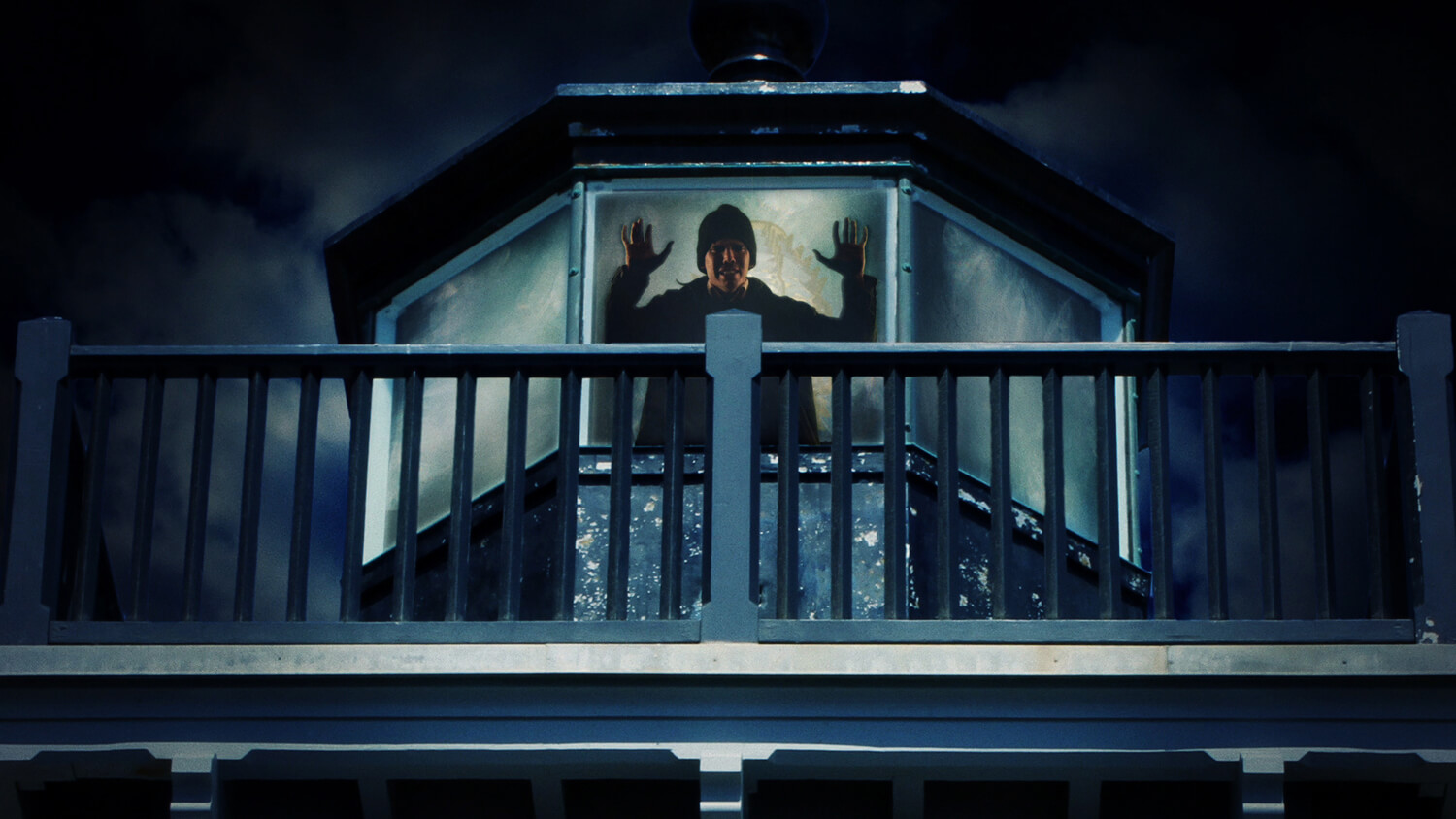

The spirits tormenting the lighthouse keeper in World War Two drama Thunder Rock inspire him to return home and fight, while in Robert Eggers’ fantasy-horror The Lighthouse, Willem Dafoe and Robert Pattinson’s “wickies” seem possessed by the light. In more than 100 years of lighthouse films these peculiar buildings have provided a conduit for our angst. The age of lighthouse keepers is now long passed – the buildings standing empty and automated – but the existential questions posed by their experience remain relevant and irresistible. Lighthouse history is so littered with tragic and bizarre stories that ghosts and insanity became credible red-herrings in Michael Powell’s lighthouse thriller The Phantom Light. In 1801 a corpse moving in the wind appeared to beckon the keeper at Smalls. In 1900 three keepers mysteriously vanished from the Scottish island of Eilean Mor. As buildings, rock lighthouses symbolise man’s mastery of the sea, but the experience of those inside betrays vulnerability. This uncertainty fuels folklore: mysterious creatures, hauntings and the cruel hand of God. It is often said that we know more about outer space than the ocean. “Whether sea or space,” writes Nancollas, “these realms into which we stray are exhilarating because we know we are trespassers.” These are survival stories, internal battles of will. Just as this isolation breeds insanity for the lighthouse keepers in Tower of Terror and Thunder Rock, so it does for the astronauts in Andrei Tarkovsky’s Solaris, Danny Boyle’s Sunshine and James Gray’s Ad Astra.

Both Grémillon’s lighthouse keepers and Cuarón’s astronauts are stranded in a vast, hostile landscape at the forefront of human endeavour. With his suffocating frame and devastating cuts, Grémillon provokes a fear response comparable to Alfonso Cuarón’s Gravity. Each cut between the rock and the mainland amplifies the distance a poignant suggestion of their doomed fate. The near square aspect ratio of silent cinema intensifies the claustrophobia and the tiny space becomes a tragic pressure cooker as they wait out a violent storm. The lighthouse keeper’s son is going mad from a dog bite and the cramped interior pushes the characters into conflict. One hundred years earlier, the spiral staircase in Grémillon’s film was the setting of a struggle between the sane and psychotic. His lighthouse is a lobotomy clinic for the criminally insane. Scorsese takes this to extremes at the climactic twist of Shutter Island.

Spiral staircases have long been a visual shortcut for confusion and psychological unravelling. On screen, their vertical architecture and confined interiors have symbolic meaning and dramatic imperative. No wonder we imagine their lonely inhabitants go mad.įilmmakers have given life to these unseen buildings by drawing on their contradictions as places of light and darkness, safety and danger: a home to criminals in The Phantom Light and a killer in Tower of Terror. They signpost wrecked ships and men drowning in icy waters, heads dashed against black rocks or swallowed by erupting waves of white spray. Seen only in our imaginations rock lighthouses are eerie places, soaked in mystery and surrounded by death. “There can be few other buildings designed expressly to repel, to emphatically not be seen at close quarters,” observes Tom Nancollas in his book ‘Seashaken Houses’. The enduring appeal of the rock lighthouse lies in the physical presence of the buildings themselves. Taking us inside the lantern, the director captures the hypnotic and hallucinatory power of the turning light. In 1929, Jean Grémillon’s deep blacks, swirling camera and high angles made strange the forbidding ocean in The Lighthouse Keepers. But even before sound, film could defamiliarise the ocean faster than any novelist. Martin Scorsese weaves them seamlessly into his psychological thriller Shutter Island using Ingram Marshall’s ominous track, ‘Fog Tropes’. We’re hardwired to react uneasily to their peculiar soundscape, from the howling winds that give the real-life Wolf Rock its name, to biblical storms and the low-pitch of fog horns. These isolated and exposed offshore ‘rock’ lighthouses have provided a fertile setting for mysteries, weird tales and descents into madness ever since.Ĭinema is uniquely placed to tell these stories using the very senses that make us curious and afraid. Edgar Allen Poe’s last known (and unfinished) story is narrated by a paranoid lighthouse keeper who fears the building will tumble around him. The tragedy echoed through our cultural consciousness. Battered by the raging elements, it collapsed in 1703 killing everyone inside. The first of these structures survived just five years. To their early occupants, offshore lighthouses were as remote and uninhabitable as space.


 0 kommentar(er)
0 kommentar(er)
